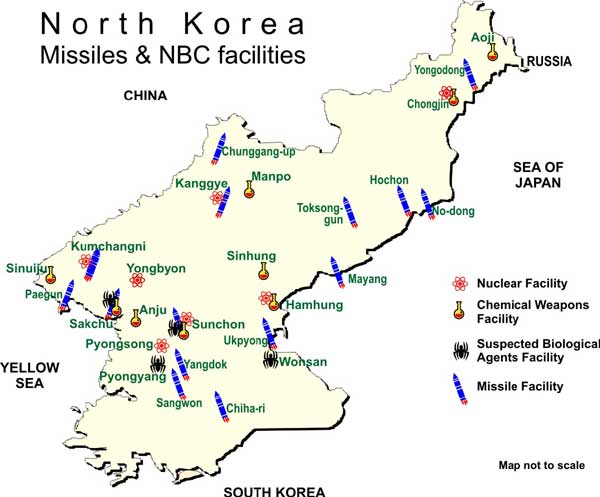U.S. deploys attack drones to South Korea amid tension with North
By James Pearson
SEOUL (Reuters) - The United States has started to deploy attack drones to South Korea, a U.S. military spokesman said on Monday, days after it began to deploy an advanced anti-missile system to help counter the ballistic missile capabilities and "continued provocative actions" by isolated North Korea.
 |
| Ballistic Missiles and NBC Weapon Programme of North Korea » Indian Defence Review |
/about/location-56a9b14c3df78cf772a9a855.jpg) |
| Installation Overview --Kunsan Air Base, South Korea |
RPV Missile Defense Capabilities
Gray Eagle MQ1C is a variant with a different engine and lower 29,000 ft combat ceiling of the GA-ASI Predator B which has demonstrated BMD Detection and Tracking using a pair of UAV with enhanced MTS ball sensors . |
| Sensor Enables Reaper Drones to Track Ballistic Missiles |
Pair of GA-ASI Predator B Detects and Tracks Ballistic Missile in Pacific Dragon Exercise - UASweekly.com
General Atomics Aeronautical Systems, Inc. (GA ASI), a leading manufacturer of Remotely Piloted Aircraft (RPA) systems, radars, electro-optic and related mission systems solutions, today announced that through a contract with the Missile Defense Agency (MDA), it executed a missile tracking test as part of the Pacific Dragon (PD) exercise held June 26-28 off the coast of the Pacific Missile Range Facility (PMRF) in Kauai, Hawaii.Pacific Dragon is a trilateral Ballistic Missile Defense (BMD) tracking event between the U.S. Navy, Japan Maritime Self Defense Force, and Republic of Korea Navy. The biennial exercise focuses on improving tactical and technical coordination among its participants, including the detection, tracking and reporting of ballistic targets.
Two Predator® B RPA equipped with Raytheon Multi-spectral Targeting Systems-B (MTS-B) Electro-optical Infrared (EO/IR) turrets were used to detect and track a Ballistic Missile (BM) target as part of an ongoing program with MDA. The Predator B aircraft also participated in exercises with U.S. Navy vessels.
“The test provided valuable data in our ongoing effort to develop an effective airborne missile defense capability,” said Linden Blue, CEO, GA-ASI.
A technologically advanced derivative of the combat-proven Predator, the multi-mission Predator B/MQ-9 Reaper® is a long-endurance, medium- to high-altitude RPA that can be used for surveillance, military reconnaissance, and targeting missions. The current aircraft configuration features an extensive payload capacity and is powered by a Honeywell turboprop engine with an altitude of over 45,000 feet. It is currently operational with the U.S. Air Force, U.S. Department of Homeland Security, NASA, and a number of NATO countries.
Related/Background:
- Improved Gray Eagle® (IGE) Unmanned Aircraft System (UAS) - Army Technology
- Predator Bs Tested for Ballistic Missile Defense | Defense News: Aviation International News
- GA-ASI Completes Latest Airborne Missile Defense Test
- US to deploy new Gray Eagle attack drone system in South Korea - News - Stripes
- spendergast: GA-ASI $95M Contracts for new Gray Eagle Ground Control Stations

No comments:
Post a Comment